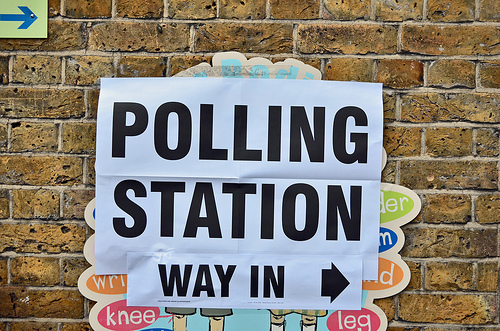
We’re just past halfway! Are you prepared to enter the polling booth?
We’re just past the halfway line in this crazy election campaign! Are you prepared to enter the polling booth and make your vote count? electionWIRE has put together some handy resources to get you in the know!
The political system and you – via #electionWIRE
The fastest (and funniest) look into the Australian political system and how it all works from electionWIRE 2010!
Preferences explained – via Future Politicians
How to vote cards
The preferences of the different parties will be made apparent on their ‘how to vote’ cards, which are handed out around election day, and are the subject of much speculation.
“If people are confused about their preferences or don’t want to pay any attention to it, they can take a how to vote card,” said the Australian National University’s Professor John Wanna.
“Every party and every candidate who is worth their salt puts time and effort into manning the election booths with staff who will give out how to vote cards to anyone who is willing to take them.
“That will give you that party, or that candidate’s, preferred preference flow,” he said. “If you just follow that how to vote card, you’ll be following the party of your choice.”
However, just because voters are being told to vote a certain way, doesn’t mean they’ll always follow those instructions.
“It really is dependent on how disciplined the voters for that party are,” explained Professor Wanna. If you look at the way people have voted over the last few decades, Labor voters typically adhere to the preferences of the party.
“If the Liberals or the Greens were handing out how to vote cards,” however, “you might find anywhere between 15 and 20 percent might not follow their party.”
This is because the party voters are “less aligned to that party, or want to make their own mind up,” said Professor Wanna.
But how does the preferencing system actually work? If this is your first election, and you’re wanting to make sure your vote counts, it can be quite confusing.
In order for it to be a valid vote, you need to number all of the candidates from your first preference to your last. The votes are then counted, and this is where the preferencing system comes in.
To make this simple, I’m using Big Brother contestants for my candidates. Here, we’ll say there’s 100, 000 formal votes. In order for a candidate to win a seat, they must receive an absolute majority. That’s 50% plus one, so in this case, 50, 001 votes.
First Count
The first count can also be referred to as the Primary Count. Here, votes go straight to whomever you voted as number 1.
Jade received 35, 000, Ben got 21, 000, Tully got 16, 000, and Tim got 30, 000.
In this case, Tully has the lowest number of votes, with 16, 000, and is excluded. Her votes are then divvied up in the second count.
Second Count
Here’s where the preferences come in. Tully’s 16,000 votes are now distributed to the remaining candidates, based on who they put as number 2.
Jade is now on 40,000, after receiving 7,000 votes from Tully. Ben is now on 25, 000, and Tim is on 35, 000.
Here, it’s Ben who has the least number of votes, and he’s excluded. It’s down to Tully and Tim, but there’s still no absolute majority.
Third Count
Ben’s 25, 000 votes are divided up between Jade and Tim.
Tim gets a swing of votes from those who initially voted for Tully and Ben, making him the winner of the seat, or the Big Brother millions, whichever way you want to look at it.
If we didn’t have preferences, our political landscape would look completely different. If, like in Big Brother, you only got to vote for one person, the seat would simply go to whoever got the most votes in the first count. In this example, Tim only got 30% of the number one votes, and so would have lost to Jade, who got 33%.
If this was the case, “a candidate can win the seat on only, say, 20 per cent,” Professor Wanna said, “and 80 per cent didn’t vote for that person.
“But because they’re the largest vote, they win the seat.”
What Australia’s mandatory voting and preferential system is attempting to provide is a parliament full of members who represent the majority of Australian citizens. It means, as long as you didn’t donkey vote, your vote can never be wasted. Don’t be intimidated by the long list of names- your vote is important.
This article was originally posted on Future Politicians – an online website and radio show providing a space for young people to talk about politics.
Yara Murray-Atfield is a Journalism student at RMIT and one of the Executive Producers at Panorama, SYN’s current affairs flagship. She tweets at@YaraM_A.
This is AWESOME! The Senate explained by GetUp and Game of Thrones










